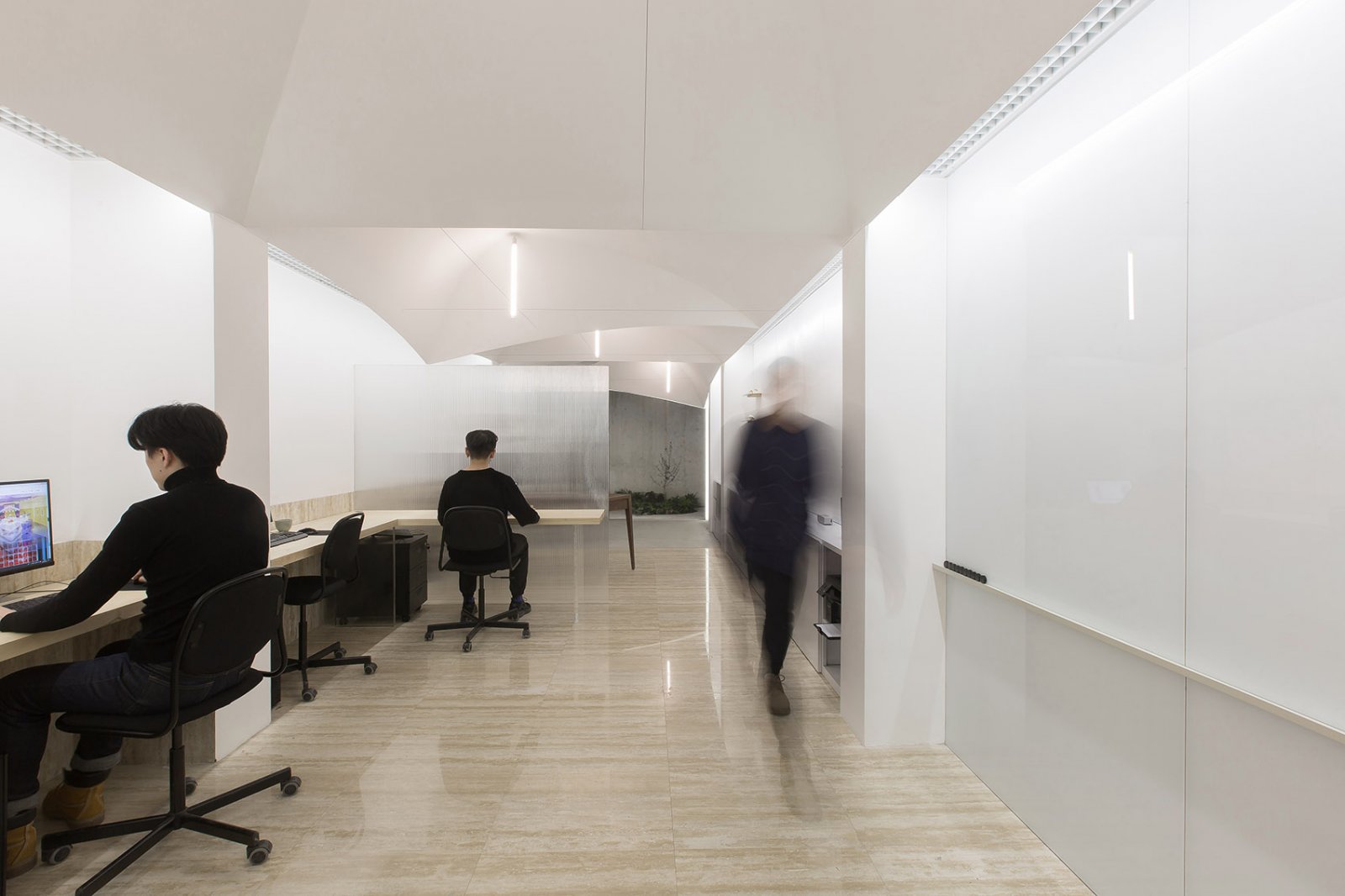Butaro Hospital MASS Design Group
2011-09-06 00:00
Courtesy of MASS Design Group
2011年1月,卢旺达卫生和伙伴卫生部(PIH)在卢旺达Burera区开设了有140个床位的Butaro医院。Burera区的人口超过340 000人,与卢旺达其他地区相比,其健康指标历来很差,是该国最贫困的地区之一。在PIH于2007年抵达之前,Burera是该国最后两个没有发挥作用的地区医院之一,而且没有一名医生。大众设计集团是由妊高征在2008年引入,以帮助规划和设计一个一流的设施,以帮助扭转这些情况。
In January 2011, the Rwandan Ministry of Health and Partners In Health (PIH) opened the 140-bed Butaro Hospital in the Burera District of Rwanda. Burera District, which has a population of over 340,000, has historically had very poor health indicators compared to other areas of Rwanda, and is one of the most impoverished districts in the country. Prior to PIH’s arrival in 2007, Burera was one of the last two districts in the country without a functioning district hospital and was without a single doctor. MASS Design Group was brought in by PIH in 2008 to help plan and design a first-rate facility that would help reverse these conditions.
Courtesy of MASS Design Group
在医院的设计中,大众设计集团和妊高征力求创造一个更全面的建筑模式,其中包括设计一所适当的、最先进的医院,同时也充分规划建筑过程,以便利用、教育和增强当地社区的能力。
In the design of the hospital, MASS Design Group and PIH sought to create a more holistic model of architecture that included the design of an appropriate, state of the art hospital while also fully choreographing the process of construction to employ, educate and empower the local community.
在通过在布塔罗健康中心的生活和工作以及与来自妊高征、哈佛公共卫生学院、哈佛医学院和疾病控制中心的全球卫生专家进行咨询之后,医院或医院传播的感染问题变得明显起来。由于走廊拥挤和通风不足,特别是在农村贫困地区,病人和保健提供者往往在卫生设施内感染空气传播疾病的高风险。Butaro的设计旨在通过包括总体布局、病人和工作人员流动以及自然通风在内的几个系统来减少和减少空气传播疾病的传播,提供一个模板和方法,可在资源有限的情况下,在结核病高风险地区和其他空气传播疾病的地区复制。
After immersion in the field through living and working at the Butaro Health Center, and consultation with global health experts from PIH, Harvard School of Public Health, Harvard Medical School, and the Center for Disease Control, the issue of nosocomial or hospital- borne infection became apparent. Due to crowded corridors and insufficient ventilation, patients and healthcare providers were often subjected to the high risk of contracting airborne diseases inside health facilities, particularly in rural, impoverished settings. The design of Butaro sought to mitigate and reduce the transmission of airborne disease through several systems, including overall layout, patient and staff flow, and natural ventilation, providing a template and approach that could be replicated in areas of high risk for TB transmission and other airborne diseases in resource-limited settings.
布塔罗医院的设计包含了一系列创新功能,旨在将感染风险降至最低。消除内部走廊和安装大半径风扇和百叶窗确保频繁的空气交换,这是减少传输的一个关键策略。为了在病房产生必要的空气变化,在战略点使用了直径为24英尺的大容量低速风扇,将空气从病房中移出百叶窗和打开的窗户,同时清除潜在的有害微生物。安装了杀菌紫外线灯来杀死或灭活微生物,因为空气通过房间的上部区域。最后,使用一种不透水的、连续的地板饰面,使表面没有容易滋生细菌的关节。本实用新型易于清洗,经久耐用,抗感染安全。
The Butaro Hospital design incorporates a range of innovative features designed to minimize risk of infection. Elimination of interior corridors and installation of large-radius fans and louvered windows ensure frequent air exchange, a key strategy in reducing transmission. In order to produce the necessary air changes in the ward, high-volume, low-speed fans with diameters of 24 feet were used at strategic points to move air from the wards out the louvers and open windows, and in doing so remove potentially harmful microbes. Germicidal UV lights were installed to kill or inactivate microbes as air is drawn through the upper regions of the room. Finally, the use of a non-permeable, continuous floor finish provided a surface devoid of joints prone to bacterial growth. The floor type is easy to clean, durable, and safe by resisting infection.
除了提供一流的医疗设施之外,布塔罗医院项目还被用作刺激基层企业和发展的一种方式。用100%的当地劳动力建造,3,898人接受了培训和雇用,以帮助挖掘、建造和管理该项目。建筑小组被组织成六个小组,每个小组轮流工作两周。这使被雇用和参与建筑过程的人数增加了六倍。所有雇员都得到了食物、水和医疗保健。雇佣更多的劳动力比单纯使用重型设备挖掘山坡和移动土地更便宜、更快-但更重要的是,它提供了创造就业机会和为该项目带来社区投资的额外好处。
Beyond providing access to first-rate healthcare facilities, the Butaro Hospital project was used as a way to spur grassroots business and development. Constructed with 100% local labor, 3,898 people were trained and hired to help excavate, construct, and manage the project. Construction teams were organized into six teams, each of which worked a two-week shift. This allowed for six times as many people to be hired and be involved in the building process. All employees were provided with food, water, and healthcare. Employing more laborers was cheaper and faster than using solely heavy equipment to excavate the hillsides and move the earth — but more importantly, it provided the added benefits of both creating jobs and engendering community investment in the project.
砌体的能力建设和双向学习自然发生在项目的各个阶段和领域,从设计车间到当地建设者,到现场开发的具体施工方法。火山石是卢旺达北部景观中的一种普遍存在的元素;通常被清理农田的农民认为是一种讨厌的东西。在建筑中使用时,通常只用于地基或庭院墙,而且通常部分或完全用灰泥覆盖。为了揭示这块石头的独特和美丽的质地,我们试图将灰泥降到最低,并创造出一片均匀和几乎无缝的深灰色多孔墙。经过多次模拟之后,梅森一家开始对正在出现的产品感到兴奋,并最终得到了许可。随着他们在医院校园里的各个建筑中的进步,他们的工作也变得越来越精益求精。意识到他们的技能是如何进步的,石匠们最终出于一种自豪感,愿意免费取代他们最初的工作。作为新培训的、高技能的承包商,这些石匠现在全国其他地区被试图复制“布塔罗宏伟石墙”的承包商所追捧。
Masonry Capacity building and two way learning happened naturally at all stages and areas of the project, from design workshops with the local builders through on-site development of specific construction methods. Volcanic stone is a ubiquities element of the northern Rwandan landscape; commonly thought of as a nuisance by farmers clearing their fields. When used in building, it is typically only for foundations or courtyard walls, and is often covered partially or completely with mortar. In an effort to reveal the exceptionally unique and beautiful texture of the stone we sought to minimize mortar, and create an even and nearly seamless expanse of deep gray porous walls. After multiple mock-ups, the mason’s began to get excited about the product that was appearing, and finally were given the go- ahead. As they progressed through the various buildings on the hospital campus, their work became more and more refined. Recognizing how their skill had advanced as they worked, the masons eventually offered to replace their initial work at no cost, out of a sense of pride. As newly trained, highly skilled contractors, these masons are now sought after in other parts of the country by contractors seeking to replicate the “magnificent stone walls of Butaro.”
 举报
举报
别默默的看了,快登录帮我评论一下吧!:)
注册
登录
更多评论
相关文章
-

描边风设计中,最容易犯的8种问题分析
2018年走过了四分之一,LOGO设计趋势也清晰了LOGO设计
-

描边风设计中,最容易犯的8种问题分析
2018年走过了四分之一,LOGO设计趋势也清晰了LOGO设计
-

描边风设计中,最容易犯的8种问题分析
2018年走过了四分之一,LOGO设计趋势也清晰了LOGO设计






























































































